 One of Oklahoma’s distinguished, high ranking personnel in the forces of the United States in World War II, Rear Admiral Joseph James Clark, is a native Oklahoman of Cherokee descent. His outstanding service record compiled by the Navy Department is as follows:
One of Oklahoma’s distinguished, high ranking personnel in the forces of the United States in World War II, Rear Admiral Joseph James Clark, is a native Oklahoman of Cherokee descent. His outstanding service record compiled by the Navy Department is as follows:
Rear Admiral Clark was born in Pryor, Oklahoma, November 12, 1893, and prior to his appointment to the Naval Academy, he attended Willie Halsell College, Vinita, Oklahoma, and Oklahoma Agriculture and Mechanical College, Stillwater, Oklahoma. While at the Naval Academy he played lacrosse and soccer. He graduated with the Class of 1918 in June 1917, and during the World War served in the U.S.S. North Carolina which was engaged in convoying troops across the Atlantic. From 1919 to 1922 he served in destroyers in the Atlantic, in European waters and in the Mediterranean, and during the latter part of that duty served with the American Relief Administration in the Near East.
In 1922-1923 he had duty at the Naval Academy as instructor in the Department of Seamanship and Navigation, and qualified as a naval aviator at the Naval Air Station, Pensacola, Florida, on March 16, 1925. Later that year he joined the Aircraft Squadrons of the Battle Fleet and assisted Commander John Rodgers in preparing navigational data for the first West Coast-Hawaii flight in 1925, and received a letter of commendation for this service.
In 1926 he joined the U.S.S. Mississippi and served as her senior aviation officer and during the following year was aide on the staff of Commander, Battleship Division Three, and served as Division Aviation Officer.
From 1928 to 1931 Rear Admiral Clark was executive officer, Naval Air Station, Anacostia, D.C., and during the next two years was commanding officer of Fighter Squadron Two attached to the U.S.S. Lexington. He was the aeronautical member of the Board of Inspection and Survey, Navy Department, from 1933 to 1936 and during the next tour of sea duty July, 1936 to June, 1937, served as the Lexington‘s representative at Fleet Air Detachment. U.S. Naval Air Station, San Diego, California, and later as Air Officer of the Lexington. He was executive officer of the Fleet Air Base, Pearl Harbor, from July, 1937, to May, 1939. During the months of June and July he had additional duty with Patrol Wing Two, and, until the end of the year, was executive officer of the Naval Air Station at Pearl Harbor, afterwards serving as inspector of naval aircraft at the Curtis Aircraft Corporation, Buffalo, New York.
He was executive officer of the Naval Air Station, Jacksonville, Florida, from December 1940, until May 1941, when he reported for duty as executive officer of the old U.S.S. Yorktown, and in that carrier participated in the raid on the Marshall and Gilbert Islands. After detachment from the Yorktown he had duty in the Bureau of Aeronautics, Navy Department, Washington, D.C., from February 28 until June 20, 1942. He fitted out an auxiliary aircraft carrier, the U.S.S. Suwanee, and commanded her from her Commissioning.
For his service in this command during the assault on and occupation of French Morocco, he received the following Letter of Commendation by Admiral Royal E. Ingersoll, U.S.N., Commander in Chief, Atlantic Fleet:
“The Commander in Chief, United States Atlantic Fleet, notes with pleasure and gratification the report of your performance of duty as Commanding Officer of the U.S.S. Suwanee during the assault on and occupation of French Morocco from November 11, 1942. The Commander in Chief, United States Atlantic Fleet, commends you for the high efficiency, outstanding performance and skillful handling of the U.S.S. Suwanee and attached aircraft which contributed so notably to the unqualified success attained by the Air Group during this operation. Your meritorious performance of duty was in keeping with the highest traditions of the Naval Service.”
On February 15, 1943, he reported to the Newport News Shipbuilding and Dry Dock Company, Newport News, Virginia in connection with fitting out the U.S.S. Yorktown and commanded her from commissioning until February 10, 1944. For his service in this command during the operations against Marcus, Wake, Mille, Jaluit, Makin, Kwajalein and Wotje, he has been awarded a Letter of Commendation by Vice Admiral John H. Towers, U.S.N., Commander, Air Force, Pacific Fleet, and a Silver Star Medal, with the following citations:
Letter of Commendation:
“For extraordinary performance and distinguished service in the line of his profession as commanding officer, U.S.S. Yorktown during the operations against Marcus Island on 31 August 1943 and against Wake Island on 5-6 October, 1943. On the first mentioned date, the air group of the Yorktown was launched at night and after a successful rendezvous was sent to Marcus Island and delivered the first attack before dawn. In this attack, the enemy was taken completely by surprise and all aircraft were destroyed on the ground. The subsequent attacks delivered by his air group contributed to the destruction of approximately eighty per cent of the installations on the island. On 5 October, 1943, his air group repeated a successful and effective attack on Wake Island before dawn. During this attack, eight enemy airplanes were destroyed in aerial combat and five were strafed on the ground. Eight additional airplanes were destroyed in the air by his air group in the following attack and eleven on the runways. Repeated bombing and strafing attacks were effectively delivered against all assigned objectives on that date. On 6 October, additional airplanes were strafed on the runways during a pre-dawn attack and severe damage wrought by dive bombing and strafing attacks on anti-aircraft and shore battery emplacements, fuel dumps, barracks, shops and warehouses. A total of 89 tons of bombs were dropped by his air group on assigned objectives. His outstanding leadership, his exceptional ability to organize and his courageous conduct throughout these engagements contributed immeasurably to the destruction of the enemy forces on these islands. His performance of duty was in keeping with the highest traditions of the U.S. Naval Service.”
Silver Star Medal
“For conspicuous gallantry and intrepidity as Commanding Officer of the U.S.S. Yorktown, during operations against enemy-held islands in the Central Pacific Area, from August 31 to December 5, 1943. Skillfully handling his ship during these widespread and extended operations, Rear Admiral (then Captain) Clark enabled aircraft based on his carrier to launch damaging attacks on enemy aircraft, shipping and shore installations on Marcus, Wake, Jaluit, Kwajalein and Wotje Islands. During the day and night of December 4, when the Yorktown was under severe enemy attack, almost continuously for one five-hour period at night, he maneuvered his vessel so expertly that all attacks were repelled without damage. By his devotion to duty throughout, he contributed materially to the success of our forces and upheld the highest traditions of the United States Naval Service.”
The U.S.S. Yorktown was awarded the Presidential Unit Citation for her heroism in action in the Pacific from August 31, 1943, to August 15, 1945. As her commanding officer during the first part of this period, Rear Admiral Clark received a facsimile of, and the ribbon for, this citation. The citation follows:
Presidential Unit Citation – USS Yorktown
“For extraordinary heroism in action against enemy Japanese forces in the air, at sea and on shore in the Pacific War Area from August 31, 1943, to August 15, 1945. Spearheading our concentrated carrier-warfare in forward areas, the U.S.S. Yorktown and her air groups struck crushing blows toward annihilating the enemy’s fighting strength; they provided air cover for our amphibious forces; they fiercely countered the enemy’s savage aerial attacks and destroyed his planes; and they inflicted terrific losses on the Japanese in Fleet and merchant marine units sunk or damaged. Daring and dependable in combat, the Yorktown with her gallant officers and men rendered loyal service in achieving the ultimate defeat of the Japanese Empire.”
On January 31, 1944, he was appointed Rear Admiral to rank from April 23, 1943. From February 1944 through June 1945 Rear Admiral Clark served as a Task Group Commander operating alternately with the First and Second Fast Carrier Task Groups of the U.S. Pacific Fleet, with the U.S.S. Hornet as his flagship. During this period he also was Commander of Carrier Division 13 (later redesignated Carrier Division 5). For his services during this period, Rear Admiral Clark was awarded the Distinguished Service Medal, a Gold Star in lieu of a Second Distinguished Service Medal, the Navy Cross, and the Legion of Merit. He also received a facsimile of and the ribbon for, the Presidential Unit Citation to the U.S.S. Hornet. The citations follow:
Distinguished Service Medal:
”For exceptionally meritorious service to the Government of the United States in a duty of great responsibility as Commander of a Task Group of Carriers and Screening Vessels in operations against enemy Japanese forces in the Pacific Area from April through June 1944. Participating in our amphibious invasion of Hollandia on April 21 to 24, Rear Admiral Clark’s well-coordinated and highly efficient units rendered invaluable assistance to our landing forces in establishing a beachhead and securing their positions and later, at the Japanese stronghold of Truk, helped to neutralize shore installations and planes both on the ground and in the air. By his keen foresight and resourcefulness, Rear Admiral Clark contributed in large measure to the overwhelming victories achieved by our forces against Japanese carrier-based aircraft, task units and convoys during the battle of the Marianas and attacks on the Bonin Islands. His indomitable fighting spirit and heroic leadership throughout this vital period were in keeping with the highest traditions of the United States Naval Service.”
Navy Cross:
“For distinguishing himself by extraordinary heroism in operations against the enemy while serving as Commander of a Task Group in the vicinity of the Bonin Islands on 4 August, 1944. Upon receipt of information that an enemy convoy had been sighted proceeding in a northerly course enroute from the Bonins to the Empire, he immediately requested and received permission to organize an interception. He forthwith proceeded at high speed to lead his forces into Japanese home waters and intercepted the convoy, sinking five cargo vessels, four destroyer escorts and one large new type destroyer, while aircraft launched on his order searched within two hundred miles of the main islands of Japan shooting down two four engined search planes and one twin engined bomber as well as strafing and heavily damaging a destroyer and sinking three sampan type patrol vessels, and later in the day a light cruiser and an additional destroyer. By his professional skill, high personal courage, and superlative leadership, he inspired the units under his command to exceptional performance of duty in close proximity to strongly held home bases of the enemy. His conduct throughout was in keeping with the highest traditions of the Naval Service.”
Legion of Merit:
“For exceptionally meritorious conduct in the performance of outstanding service as Commander of a Task Group of the Fast Carrier Task Forces during the period from 24 March to 28 March 1945. On 24 March, he aggressively attacked a Japanese convoy of eight ships near the Ryuku Islands. By swift decisive action he directed planes of the Task group so that they were able to sink the entire convoy. On 28 March a sweep of Southern Ryuku was initiated by the Task Group Commander and resulted in the destruction of one Japanese destroyer and a destroyer escort, in addition to numerous Japanese aircraft. His quick thinking, careful planning and fighting spirit were responsible for a maximum of damage done to the enemy. His courage and devotion to duty were at all times inspiring and in keeping with the highest traditions of the United States Naval Service.”
Gold Star in lieu of Second Distinguished Service Medal
“For exceptionally meritorious service to the Government of the United States in a duty of great responsibility as Commander Task Group Fifty-Eight Point One during action against enemy Japanese forces in the Tokyo Area and the Ryukyus, and in supporting operations at Okinawa, from February 10 to May 29, 1945. Maintaining his Task Group in a high state of combat readiness, Rear Admiral Clark skillfully deployed the forces at his disposal for maximum effectiveness against the enemy. Directing operations with brilliant and forceful leadership, he was responsible for the swift interception of Japanese air groups flying in to attack our surface units and by his prompt and accurate decisions, effected extensive and costly destruction in enemy planes thereby minimizing the danger to our ships and personnel. As a result of his bold and aggressive tactics against hostile surface units on March 24 and 28, the planes of Task Group Fifty-Eight Point One launched a fierce aerial attack against a convoy of eight enemy ships near the Ryukyu Islands to sink the entire convoy during the first engagement and a hostile destroyer and destroyer escort in the second. Courageous and determined in combat, Rear Admiral Clark served as an inspiration to the officers and men of his command and his successful fulfillment of a vital mission contributed essentially to the ultimate defeat of the Japanese Empire.”
Presidential Unit Citation – USS Hornet
“For extraordinary heroism in action against enemy Japanese forces in the air, ashore and afloat in the Pacific War Area from March 29, 1944, to June 10, 1945. Operating continuously in the most forward areas, the USS Hornet and her air groups struck crushing blows toward annihilating Japanese fighting power; they provided air cover for our amphibious forces; they fiercely countered the enemy’s aerial attacks and destroyed his planes; and they inflicted terrific losses on the Japanese in Fleet and merchant marine units sunk or damaged. Daring and dependable in combat, the Hornet with her gallant officers and men rendered loyal service in achieving the ultimate defeat of the Japanese Empire.”
Returning to the United States in June 1945, Rear Admiral Clark resumed duty as Chief, Naval Air Intermediate Training Command, with headquarters at Corpus Christi, Texas, on June 27, 1945, and served in this capacity until September 1946. On September 7, 1946, he assumed duty as Assistant Chief of Naval Operations (Air), Navy Department, Washington, D.C.
In addition to the Navy Cross, the Distinguished Service Medal with Gold Star, the Legion of Merit, the Silver Star Medal, the Commendation Ribbon, and the Presidential Unit Citation Ribbon with two stars, Rear Admiral Clark has the Victory Medal, Escort Clasp (USS North Carolina), and is entitled to the American Defense Service Medal with Bronze “A” (for service in the old USS Yorktown which operated in actual or potential belligerent contact with the Axis Forces in the Atlantic Ocean prior to December 7, 1941); the European-African-Middle Eastern Area Campaign Medal with one bronze star; the Asiatic-Pacific Area Campaign Medal with twelve bronze stars; the Philippine Liberation Ribbon with one bronze star; and the World War II Victory Medal.
After retirement, Admiral Clark was a business executive in New York. His last position was Chairman of the Board of Hegeman Harris, Inc., a New York investment firm. Clark was an honorary chief by both the Sioux and Cherokee nations. He died 13 July 1971 at the Naval Hospital, St. Albans, New York, and is buried in Arlington National Cemeteryat Section 3, Site 2525-B.
Source: “Notes and Documents: Rear Admiral Joseph James Clark, United States Navy, Native Oklahoman.” Chronicles of Oklahoma 25 (1947): 154-158
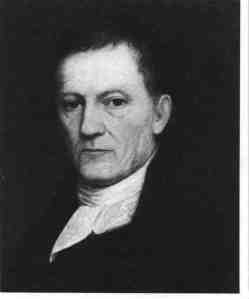

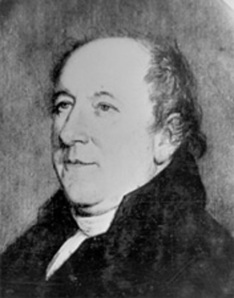

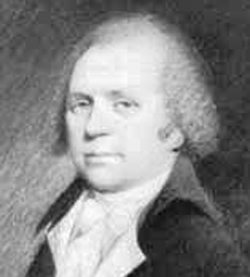
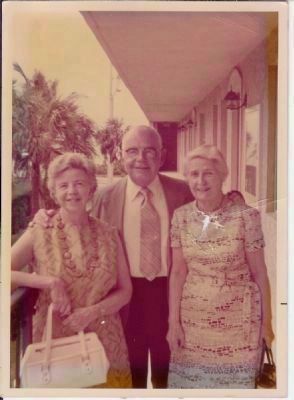
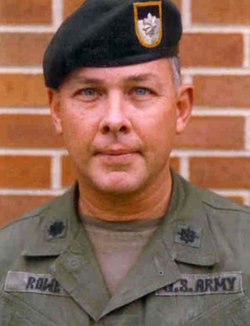


 The United States seems to have lost pride in its’ military. There have been 6,726 deaths of our brothers and sisters, since 2001, in the 3 operations (Operation Enduring Freedom, Operation Iraqi Freedom, and Operation New Dawn) of war. As this took me a while to put together, I only found ONE source who actually put together all of the names of these brave souls who lost their lives while serving our great nation, may it be death by accident or in combat.
The United States seems to have lost pride in its’ military. There have been 6,726 deaths of our brothers and sisters, since 2001, in the 3 operations (Operation Enduring Freedom, Operation Iraqi Freedom, and Operation New Dawn) of war. As this took me a while to put together, I only found ONE source who actually put together all of the names of these brave souls who lost their lives while serving our great nation, may it be death by accident or in combat.